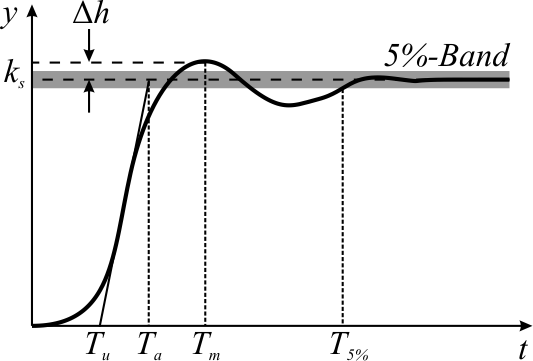|
Overmodulation
Overmodulation is the condition that prevails in telecommunication when the instantaneous level of the modulating signal exceeds the value necessary to produce 100% modulation of the carrier. In the sense of this definition, it is almost always considered a fault condition. In layman's terms, the signal is going "off the scale". Overmodulation results in spurious emissions by the modulated carrier, and distortion of the recovered modulating signal. This means that the envelope of the output waveform is distorted. Although overmodulation is sometimes considered permissible, it should not occur in practice; a distorted waveform envelope will result in a distorted output signal of the receiving medium. References See also * Clipping (audio) * Overshoot (signal) * Automatic gain control Automatic gain control (AGC) is a closed-loop feedback regulating circuit in an amplifier or chain of amplifiers, the purpose of which is to maintain a suitable signal amplitude at its output, ... [...More Info...] [...Related Items...] OR: [Wikipedia] [Google] [Baidu] |
Overshoot (signal)
In signal processing, control theory, electronics, and mathematics, overshoot is the occurrence of a signal or function exceeding its target. Undershoot is the same phenomenon in the opposite direction. It arises especially in the step response of bandlimited systems such as low-pass filters. It is often followed by ringing, and at times conflated with the latter. Definition Maximum overshoot is defined in Katsuhiko Ogata's ''Discrete-time control systems'' as "the maximum peak value of the response curve measured from the desired response of the system." Control theory In control theory, overshoot refers to an output exceeding its final, steady-state value. For a step input, the ''percentage overshoot'' (PO) is the maximum value minus the step value divided by the step value. In the case of the unit step, the ''overshoot'' is just the maximum value of the step response minus one. Also see the definition of ''overshoot'' in an electronics context. For second-order sys ... [...More Info...] [...Related Items...] OR: [Wikipedia] [Google] [Baidu] |
Telecommunication
Telecommunication is the transmission of information by various types of technologies over wire, radio, optical, or other electromagnetic systems. It has its origin in the desire of humans for communication over a distance greater than that feasible with the human voice, but with a similar scale of expediency; thus, slow systems (such as postal mail) are excluded from the field. The transmission media in telecommunication have evolved through numerous stages of technology, from beacons and other visual signals (such as smoke signals, semaphore telegraphs, signal flags, and optical heliographs), to electrical cable and electromagnetic radiation, including light. Such transmission paths are often divided into communication channels, which afford the advantages of multiplexing multiple concurrent communication sessions. ''Telecommunication'' is often used in its plural form. Other examples of pre-modern long-distance communication included audio messages, such as coded d ... [...More Info...] [...Related Items...] OR: [Wikipedia] [Google] [Baidu] |
Signalling (telecommunication)
In telecommunication, signaling is the use of signals for controlling communications. This may constitute an information exchange concerning the establishment and control of a telecommunication circuit and the management of the network. Classification Signaling systems may be classified based on several principal characteristics. In-band and out-of-band signaling In the public switched telephone network (PSTN), in-band signaling is the exchange of call control information within the same physical channel, or within the same frequency band, that the telephone call itself is using. An example is dual-tone multi-frequency signaling (DTMF), which is used on most telephone lines to customer premises. Out-of-band signaling is telecommunication signaling on a dedicated channel separate from that used for the telephone call. Out-of-band signaling has been used since Signaling System No. 6 (SS6) was introduced in the 1970s, and also in Signalling System No. 7 (SS7) in 1980 which beca ... [...More Info...] [...Related Items...] OR: [Wikipedia] [Google] [Baidu] |
Modulation
In electronics and telecommunications, modulation is the process of varying one or more properties of a periodic waveform, called the '' carrier signal'', with a separate signal called the ''modulation signal'' that typically contains information to be transmitted. For example, the modulation signal might be an audio signal representing sound from a microphone, a video signal representing moving images from a video camera, or a digital signal representing a sequence of binary digits, a bitstream from a computer. The carrier is higher in frequency than the modulation signal. In radio communication the modulated carrier is transmitted through space as a radio wave to a radio receiver. Another purpose is to transmit multiple channels of information through a single communication medium, using frequency-division multiplexing (FDM). For example in cable television which uses FDM, many carrier signals, each modulated with a different television channel, are transported through a ... [...More Info...] [...Related Items...] OR: [Wikipedia] [Google] [Baidu] |
Carrier Signal
In telecommunications, a carrier wave, carrier signal, or just carrier, is a waveform (usually sinusoidal) that is modulated (modified) with an information-bearing signal for the purpose of conveying information. This carrier wave usually has a much higher frequency than the input signal does. The purpose of the carrier is usually either to transmit the information through space as an electromagnetic wave (as in radio communication), or to allow several carriers at different frequencies to share a common physical transmission medium by frequency division multiplexing (as in a cable television system). The term originated in radio communication, where the carrier wave creates the waves which carry the information (modulation) through the air from the transmitter to the receiver. The term is also used for an unmodulated emission in the absence of any modulating signal. In music production, carrier signals can be controlled by a modulating signal to change the sound property of ... [...More Info...] [...Related Items...] OR: [Wikipedia] [Google] [Baidu] |
Fault (technology)
In document ISO 10303-226, a fault is defined as an abnormal condition or defect at the component, equipment, or sub-system level which may lead to a failure. In telecommunications, according to the Federal Standard 1037C of the United States, the term ''fault'' has the following meanings: #An accidental condition that causes a functional unit to fail to perform its required function. See . #A defect that causes a reproducible or catastrophic malfunction. A malfunction is considered reproducible if it occurs consistently under the same circumstances. See . # In power systems, an unintentional short circuit, or partial short circuit, between energized conductors or between an energized conductor and ground. A distinction can be made between symmetric and asymmetric faults. See Fault (power engineering). Random fault A random fault is a fault that occurs as a result of wear or other deterioration. Whereas the time of a particular occurrence of such a fault cannot be dete ... [...More Info...] [...Related Items...] OR: [Wikipedia] [Google] [Baidu] |
Spurious Emission
In radio communication, a spurious emission is any component of a radiated radio frequency signal the complete suppression of which would not impair the integrity of the modulation type or the information being transmitted. A radiated signal outside of a transmitter's assigned channel is an example of a spurious emission. Spurious emissions can include harmonic emissions, intermodulation products and frequency conversion products. See also *Interference (communication) *Radio spectrum pollution Radio spectrum pollution is the straying of waves in the radio and electromagnetic spectrums outside their allocations that cause problems for some activities. It is of particular concern to radio astronomer Radio astronomy is a subfield of a ... References Radio technology {{radio-comm-stub ... [...More Info...] [...Related Items...] OR: [Wikipedia] [Google] [Baidu] |
Distortion
In signal processing, distortion is the alteration of the original shape (or other characteristic) of a signal. In communications and electronics it means the alteration of the waveform of an information-bearing signal, such as an audio signal representing sound or a video signal representing images, in an electronic device or communication channel. Distortion is usually unwanted, and so engineers strive to eliminate or minimize it. In some situations, however, distortion may be desirable. For example, in noise reduction systems like the Dolby system, an audio signal is deliberately distorted in ways that emphasize aspects of the signal that are subject to electrical noise, then it is symmetrically "undistorted" after passing through a noisy communication channel, reducing the noise in the received signal. Distortion is also used as a musical effect, particularly with electric guitars. The addition of noise or other outside signals ( hum, interference) is not considere ... [...More Info...] [...Related Items...] OR: [Wikipedia] [Google] [Baidu] |
Clipping (audio)
Clipping is a form of waveform distortion that occurs when an amplifier is overdriven and attempts to deliver an output voltage or current beyond its maximum capability. Driving an amplifier into clipping may cause it to output power in excess of its power rating. In the frequency domain, clipping produces strong harmonics in the high-frequency range (as the clipped waveform comes closer to a squarewave). The extra high-frequency weighting of the signal could make tweeter damage more likely than if the signal was not clipped. In some cases, the distortion associated with clipping is unwanted, and is visible on an oscilloscope even if it is inaudible. However, clipping is often used in music for artistic effect, especially in heavier genres. Overview When an amplifier is pushed to create a signal with more power than its power supply can produce, it will amplify the signal only up to its maximum capacity, at which point the signal can be amplified no further. As the sign ... [...More Info...] [...Related Items...] OR: [Wikipedia] [Google] [Baidu] |
Automatic Gain Control
Automatic gain control (AGC) is a closed-loop feedback regulating circuit in an amplifier or chain of amplifiers, the purpose of which is to maintain a suitable signal amplitude at its output, despite variation of the signal amplitude at the input. The average or peak output signal level is used to dynamically adjust the gain of the amplifiers, enabling the circuit to work satisfactorily with a greater range of input signal levels. It is used in most radio receivers to equalize the average volume ( loudness) of different radio stations due to differences in received signal strength, as well as variations in a single station's radio signal due to fading. Without AGC the sound emitted from an AM radio receiver would vary to an extreme extent from a weak to a strong signal; the AGC effectively reduces the volume if the signal is strong and raises it when it is weaker. In a typical receiver the AGC feedback control signal is usually taken from the detector stage and applied to ... [...More Info...] [...Related Items...] OR: [Wikipedia] [Google] [Baidu] |
Telecommunication Theory
Telecommunication is the transmission of information by various types of technologies over wire, radio, optical, or other electromagnetic systems. It has its origin in the desire of humans for communication over a distance greater than that feasible with the human voice, but with a similar scale of expediency; thus, slow systems (such as postal mail) are excluded from the field. The transmission media in telecommunication have evolved through numerous stages of technology, from beacons and other visual signals (such as smoke signals, semaphore telegraphs, signal flags, and optical heliographs), to electrical cable and electromagnetic radiation, including light. Such transmission paths are often divided into communication channels, which afford the advantages of multiplexing multiple concurrent communication sessions. ''Telecommunication'' is often used in its plural form. Other examples of pre-modern long-distance communication included audio messages, such as coded drumbea ... [...More Info...] [...Related Items...] OR: [Wikipedia] [Google] [Baidu] |



